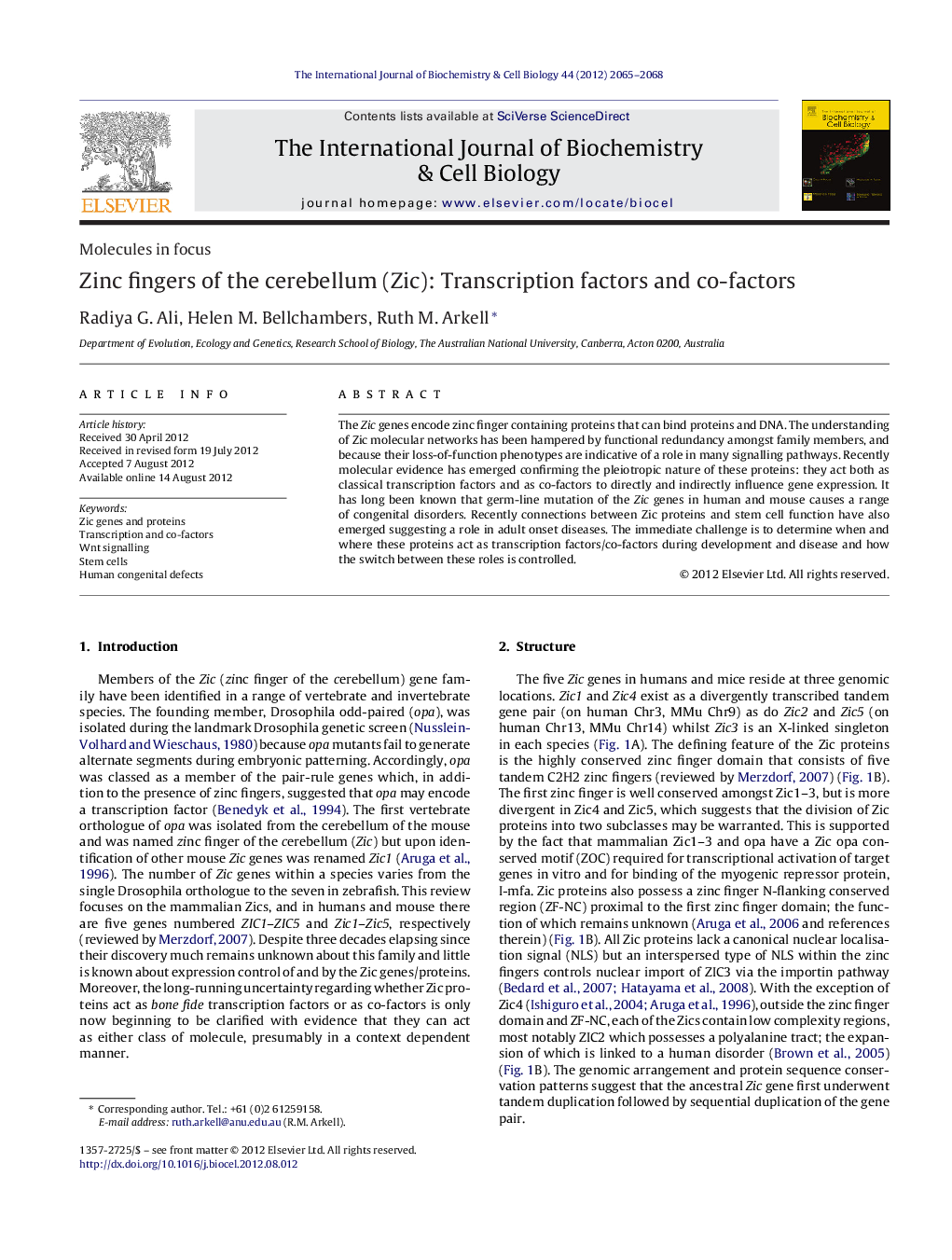| Article ID | Journal | Published Year | Pages | File Type |
|---|---|---|---|---|
| 8324495 | The International Journal of Biochemistry & Cell Biology | 2012 | 4 Pages |
Abstract
The Zic genes encode zinc finger containing proteins that can bind proteins and DNA. The understanding of Zic molecular networks has been hampered by functional redundancy amongst family members, and because their loss-of-function phenotypes are indicative of a role in many signalling pathways. Recently molecular evidence has emerged confirming the pleiotropic nature of these proteins: they act both as classical transcription factors and as co-factors to directly and indirectly influence gene expression. It has long been known that germ-line mutation of the Zic genes in human and mouse causes a range of congenital disorders. Recently connections between Zic proteins and stem cell function have also emerged suggesting a role in adult onset diseases. The immediate challenge is to determine when and where these proteins act as transcription factors/co-factors during development and disease and how the switch between these roles is controlled.
Keywords
Related Topics
Life Sciences
Biochemistry, Genetics and Molecular Biology
Biochemistry
Authors
Radiya G. Ali, Helen M. Bellchambers, Ruth M. Arkell,
